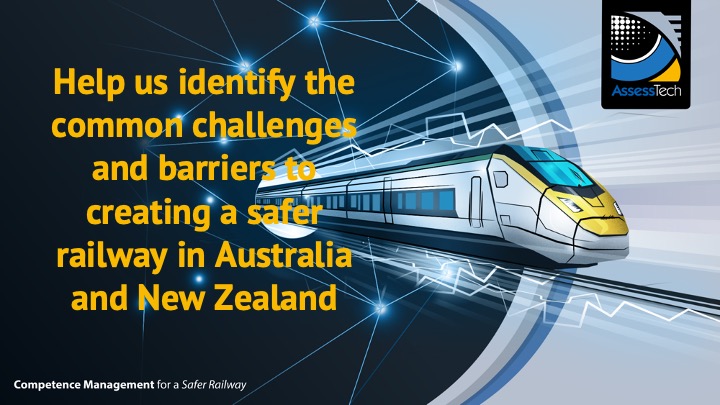Help us identify the common challenges and barriers to creating a safer railway in Australia and New Zealand
Reducing incidents and improving safety on the railway is a key driver for all passenger and freight railway operators.
A reduction in incidents is strongly correlated to improvements in skills, competence, and confidence. A skills capability report published by ARA (Australasian Railway Association) in 2018, highlighted 3 critical issues:
- Staff shortage
- Ageing workforce
- Skills gaps
Central to starting this journey is pinpointing where the challenges and barriers are. Concentrating on the easier-to-solve ones enables us to take small steps to make big changes.
We want to work with your organisation to help find the common issues, identify the easy to solve problems and roadmap the future challenges that the industry needs to consider taking the steps necessary for a safer railway.
Connect with Graham on LinkedIn here.
Email: graham.force@assesstech.com
Phone: +61 416957764

AssessTech is working closely with 3DVSL (who develop familiarisation apps for the railway industry) to identify these challenges and we have designed a survey tailored specifically to the Australian and New Zealand railway to collect the opinions of individuals working across the sector.
Our aim is to help find the common issues, identify the easy to solve problems and roadmap the future challenges that the industry needs to consider taking the steps necessary for a safer railway.
The UK railway industry has been on a similar journey over the last 20 years to:
- Streamline processes
- Boost efficiencies, and
- Improve safety on the railway.
We invite you to highlight, via this short survey (3 questions) that should take no longer than 2 minutes to complete, the challenges and barriers facing you, in your current role.
The aggregated results will be shared with those that complete the survey – so your organisation can see the common threads across the industry and start the conversations on how to solve this.
We can use the UK’s journey and experience as a template for the way forward in Australia and New Zealand. This will rapidly improve safety, bring about positive attitude change to training and competence management, with associated cost and time savings.













